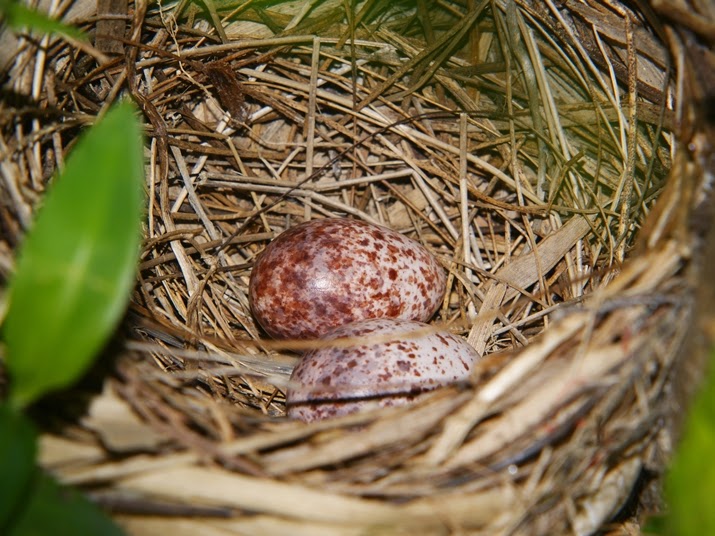 |
| Cup type nest of Yellow-vented Bulbul. |
The most familiar type of bird nest to many people is the cup type, which looks like a shallow bowl, made of twigs and grasses. Feathers, mosses, and even human hair lined the inner side, presumably to facilitate incubation. The cup nest may be constructed from down low in the bushes as seen in some species of bulbuls, or high up on a forked branch like those of the Greater Racket- tailed Drongo.
 |
| Tree hole excavated by woodpecker. |
Instead of gathering and assembling materials for their nest, many birds excavate holes or burrows. A prime example is the woodpeckers. Using their powerful chisel-like bill, and supported by their strong legs and tail, they habitually excavate nest in trees and stags. Bee-eaters and
kingfishers favor steeps banks, usually near water, where they excavate burrows using their bill and clear away the soil with their feet. Not all hole nester excavate their own nest, for some species such as
barbets, owls and
Dollarbird use naturally occurring tree hole or crevice, or even woodpeckers nests.
 |
| Blue-throated Bee-eater at its burrow. |
Perhaps the most amazing bird nest is the unmistakable nest of the
Baya Weaver. Less readily seen is the unique nest of tailorbirds, whose nest appear like a purse made of two leaves, stitched together with silk in some low shrub. In the rainforest, spiderhunters build nest made of leaves and plant material stitched on the underside of large leaved plant like banana and
Macaranga.
 |
| Ashy Tailorbird constructs purse-shaped nest. |



